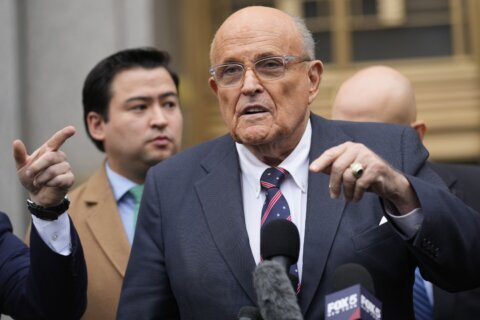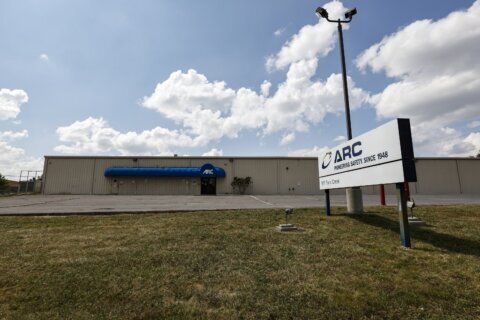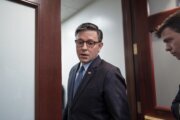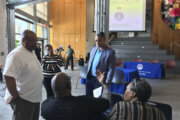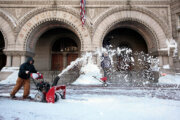CAPE CANAVERAL, Fla. (AP) — Will two NASA astronauts return to Earth soon in their troubled Boeing capsule? Or wait at the International Space Station for a ride home next year with SpaceX?
NASA has been wrestling with that decision ever since Butch Wilmore and Suni Williams arrived at the orbiting lab in early June on what was supposed to be a weeklong test flight.
Boeing has expressed confidence in its spacecraft, but there’s division within NASA.
A final decision is expected Saturday by the space agency’s top officials.
What’s wrong with Boeing’s Starliner?
This is Boeing’s first time launching astronauts, after flying a pair of empty Starliners that suffered software and other issues. Even before Wilmore and Williams blasted off June 5, their capsule sprang a leak in propulsion-related plumbing. Boeing and NASA judged the small helium leak to be stable and isolated, and proceeded with the test flight. But as Starliner approached the space station the next day, four more leaks erupted. Five thrusters also failed.
The capsule managed to dock safely, and four of the thrusters ultimately worked. But engineers scrambled, conducting thruster test-firings on the ground and in space. After 2 1/2 months, there’s still no full understanding of the thruster malfunctions. All but one of the 28 thrusters seem OK, but the fear is that if too many conk out again, the crew’s safety could be jeopardized. The thrusters are needed at flight’s end to keep the capsule in the right position for the critical deorbit burn.
Are the two astronauts stranded?
NASA bristles at suggestions that Wilmore and Williams are stranded or stuck. NASA has stressed from the get-go that in an emergency at the space station — like a fire or decompression — Starliner could still be used by the pair as a lifeboat to leave. A former NASA executive contends the astronauts are “kind of stuck,” although certainly not stranded. They’re safe aboard the space station with plenty of supplies and work to do, Scott Hubbard pointed out recently.
If NASA decides to go with a SpaceX return, Starliner would be be cut loose first to open up one of two parking spots for U.S. capsules. Before that happens Wilmore and Williams would fashion seats for themselves in the SpaceX Dragon capsule currently docked at the space station. That’s because every station occupant needs a lifeboat at all times. Once Starliner’s docking port is empty, then SpaceX could launch another Dragon to fill that slot — the one that Wilmore and Williams would ride.
Why might they have to wait until next year?
Like Boeing’s Starliner, SpaceX’s Dragon is meant to carry four astronauts. To make room for Wilmore and Williams, NASA would bump two of the four astronauts due to launch to the space station in late September with SpaceX. The empty seats would be reserved for Wilmore and Williams, but they would have to remain up there until February. That’s because station missions are supposed to last at least six months. Some have lasted a year. Two Russians up there right now will close out a yearlong stint when they return in a three-seat Soyuz capsule in September alongside a NASA crewmate. There’s no thought given to ordering up a special SpaceX express, and the Dragon at the station now is the ride home at the end of September for four residents.
This isn’t the first time astronauts have had their stay extended. NASA’s Frank Rubio and his two Russian crewmates ended up spending just over a year in space after their docked Soyuz capsule was hit by space junk and leaked all its coolant. An empty Russian capsule was sent up to bring them back last September.
What do the astronauts think about all this?
Wilmore and Williams are both retired Navy captains and longtime NASA astronauts who already have long space station missions behind them. Wilmore, 61, and Williams, 58, said going into this test flight that they expected to learn a lot about Starliner and how it operates. At their only news conference from space in July, they assured reporters they were keeping busy, helping with repairs and research, and expressed confidence in all the Starliner testing going on behind the scenes. They’ve yet to comment publicly on the prospects of an eight-month stay.
Is there enough food, water and air?
Wilmore and Williams’ suitcases were removed from Starliner before liftoff to make room for equipment urgently needed for the space station’s urine-into-drinking-water recycling system. So they made do with spare clothes already up there. A U.S. supply ship finally arrived earlier this month with their clothes, along with extra food and science experiments for the entire nine-person crew. A Russian cargo ship soon followed. As for air, the space station has its own oxygen-generating systems. Despite the fat reserves, NASA would like to get back to normal as soon as possible. Besides Wilmore and Williams, there are four other Americans and three Russians on board.
Why does NASA want two U.S. space taxis?
NASA deliberately hired two companies to get its crews to and from the space station, just as it did for delivering cargo. The space agency considered it an insurance policy of sorts: If one crew or cargo provider was grounded, the other could carry the load. “You want to have another alternative both for cost reasons and for safety reasons and options. So NASA needs Boeing to be successful,” said Hubbard, who served on the Columbia Accident Investigation Board in 2003.
Even with the latest setbacks, NASA insists it wants to keep using Boeing Starliners for astronaut rides. The goal is to send up one Dragon and one Starliner every year with crews, six months apart, until the station is retired in 2030. SpaceX has been at it since 2020.
What does Boeing say?
Boeing insists its capsule could still safely bring the astronauts home, but promises to take the steps necessary to fly it back empty if that’s NASA’s decision. Earlier this month, the company posted a list of all the thruster tests conducted since liftoff.
“We still believe in Starliner’s capability and its flight rationale.” the company said.
A longtime space contractor, Boeing has had to overcome multiple Starliner problems over the years. The company had to launch an empty Starliner twice before committing to a crew, repeating the initial flight test because of bad software and other issues. The delays have cost the company more than $1 billion.
___
The Associated Press Health and Science Department receives support from the Howard Hughes Medical Institute’s Science and Educational Media Group. The AP is solely responsible for all content.
Copyright © 2024 The Associated Press. All rights reserved. This material may not be published, broadcast, written or redistributed.

